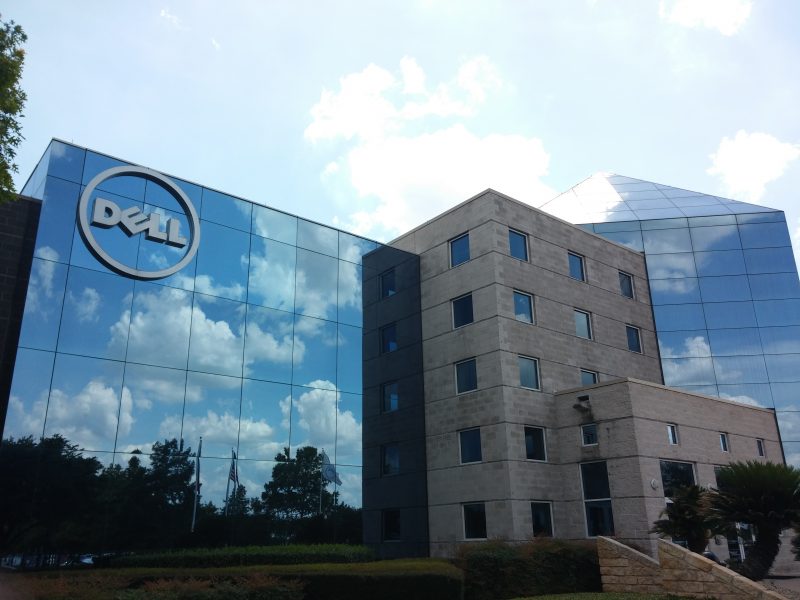 INFRA
INFRA
 INFRA
INFRA
 INFRA
INFRA
Dell Technologies Inc.’s revenue plunged 20% in its fiscal first quarter, but the results today beat lowered analysts’ estimates on both sales and profits.
Shares gained about 1.5% today on an early release of the earnings statement about noon PDT, but they fell almost 3% after-hours on disappointing guidance for the second quarter and full year, settling roughly the same place they started.
Adjusted earnings of $1.31 per share fell quite a bit from $1.84 a year ago but well ahead of analysts’ estimates of 86 cents. Revenue fell about 20% from a year ago, to $20.9 billion, but that beat estimates of $20.12. The revenue decline was the largest Dell has reported since returning to the public markets in 2016.
The company set guidance of second-quarter revenue of between $21 billion and $21.2 billion, with margins expected to shrink about 0.5%. That disappointed analysts who were looking for revenue of $21.19. The company maintained its full-year revenue expectations of a decline of between 12% and 18% and said it expects to return to sequential growth in the second half of the year.
Executives blamed the decline on the reluctance of large enterprises to commit to big deals. “What has not recovered yet is the large bids from the largest customers,” said Co-Chief Operating Officer Chuck Witten. “Enterprises continued to be cautious in their spending.”
Dell has been hit hard by a crash in PC sales to businesses, which have declined for three straight quarters. The $11.98 billion in sales its Client Solutions Group reported was down nearly 23% from $15.59 billion a year ago, although it exceeded analysts’ estimates of $11.41 billion.
Despite the pressure to stem the bleeding, executives said they are focusing on high-margin sales and growth areas in the enterprise, a strategy that has meant walking away from some deals. “There’s not a lot of price elasticity out there in the business,” Witten said. “Where we see elasticity is in the consumer business, which is not a big part of our revenue.”
Bright spots include the new PowerEdge 16G servers, which are purpose-built for artificial intelligence training, and the PowerStore and PowerFlex storage lines. PowerStore sales have grown for the past 11 consecutive quarters, Witten said.
“We remain confident in our ability to become a structural share gainer over the mid-term and long-term,” he said. “We’ll stick to the playbook that has served as well.”
Analysts said Dell has managed expectations effectively and is preparing itself for an inevitable rebound in its core markets. “Improving margins suggest that the company is doing better operationally and in managing its supply chain, finding an equilibrium that its competitors are still seeking,” said Charles King, chief analyst at Pund-IT Inc. “Overall, Dell appears well-positioned to address future challenges and market opportunities.”
David Vellante, chief analyst at SiliconANGLE sister market research firm Wikibon, said Dell is executing well in a difficult market. “Gross margins were good and they generally hit their numbers on the top line and beat EPS estimates by a considerable margin thanks to good cost control,” he said. “Cash flow was also good.”
Dell appears to be losing some storage market share to NetApp Inc. and Pure Storage Inc. but its thrust into the artificial intelligence market and APEX infrastructure-as-a-service strategy should promise future growth, Vellante said.
“The long-term strategy remains unchanged and appears on track, with edge being a potentially massive wild card,” he said. “In my view, Dell is being conservative so it can deliver on its promises and, when the market turns up, they’ll be well-positioned to grow against easier year-over-year comparisons.”
The company’s balance sheet continues to be solid. Dell ended the quarter with remaining performance obligations of $39 billion, recurring revenue of $5.6 billion, which was up 6% and deferred revenue of $29.7 billion, up 8%. Cash and investments totaled $9.2 billion and the company returned $527 million to shareholders in the first quarter through share repurchases and dividends.
THANK YOU